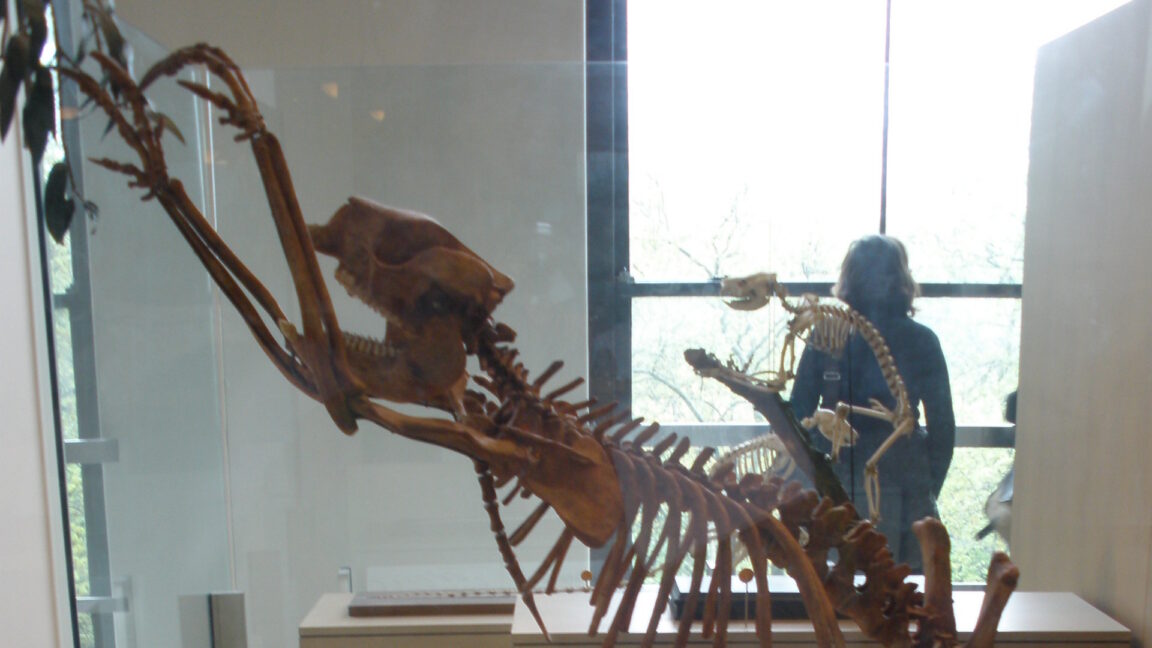This close-up image shows the cut kangaroo bone and a micro-CT image of the surfaces of the cut.
Credit:
Archer et al. 2025
The world used to be so much weirder
Based on the available archaeological evidence, it looks like people first set foot on Australia sometime around 65,000 years ago. At the time, the continent was home to a bizarre array of giant marsupials, as well as flightless birds even bigger and scarier than today’s emus and cassowaries. For the next 20,000 years, Australia’s First Peoples shared the landscape with short-faced kangaroos; Zygomaturus trilobus, a hulking 500-kilogram marsupial that looked a little like a rhinoceros; and Diprotodon optatum, the largest marsupial that ever lived: a 3,000-kilogram behemoth that roamed in huge herds (picture a bear about the size of a bison with a woodchuck’s face).
These species died out sometime around 45,000 or 40,000 years ago; today, they live on in ancient rock art and stories, some of which seem to describe people interacting with now-extinct species.
Since they had shared the continent with humans for at least 20,000 years at that point, it doesn’t seem that the sudden arrival of humans caused an immediate mass extinction. But it’s possible that by hunting or even setting controlled fires, people may have put just enough strain on these megafauna species to make them vulnerable enough for the next climate upheaval to finish them off.
In some parts of the world, there’s direct evidence that Pleistocene people hunted or scavenged meat from the remains of now-extinct megafauna. Elsewhere, archaeologists are still debating whether humans, the inexorable end of the last Ice Age, or some combination of the two killed off the world’s great Ice Age giants. The interaction between people and their local ecosystems looked (and still looks) different everywhere, depending on culture, environment, and a host of other factors.

